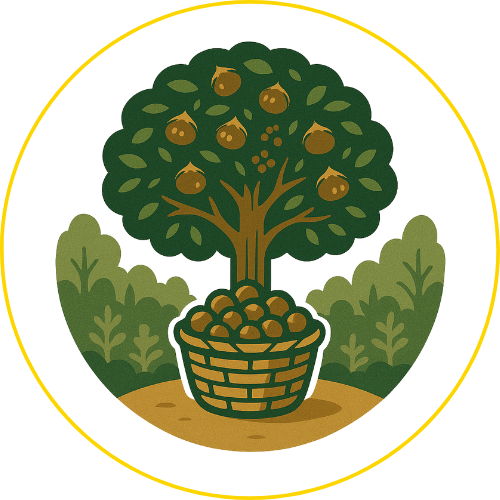Nut Tree Seedlings - Fall 2026

🧈🔩 Butternuts - Juglans cinerea
The butternut is a tough Eastern walnut that feels right at home in our Appalachian hills. This medium-to-large tree typically grows about 40–60 feet tall and wide
This medium-to-large tree typically grows about 40–60 feet tall and wide with long pinnate leaves and spiky green fruits. It bears round nuts with a rich, oily flavor that homesteaders and wildlife alike love (“buttery” is a word one grower used to describe them.
📏 Spacing: 40–60 ft
☀️ Sunlight: Full sun
🌎 Soil: Well-drained, rich loam to clay
🐝 Pollination: Self-fertile but better with a partner
🧱🔩 Black Walnuts - Juglans nigra
Rich nuts, stunning timber, and deep Appalachian roots. Plant them wide and give them time—they’re worth it.
📏 Spacing: 15 (timber) - 50' (nut production)
☀️ Sunlight: Full sun
🌎 Soil: well-drained, nearly neutral soils that are generally moist and fertile
🐝 Pollination: Self-fertile but heavier yield with two trees
🌰 Chestnuts - Castanea spp.
Sweet, starchy nuts and blight-tolerant trees. These were once the backbone of Appalachian forests—and we’re planting them back.
📏 Spacing: 15' (will need prune heavily) – 50'
☀️ Sunlight: Full sun
🌎 Soil: Well-drained, slightly acidic
🐝 Pollination: Needs a pollination partner
☕🔩 Hazelnuts - Corylus spp.
Fast-growing, bushy, and productive. Great for hedgerows, food plots, or backyard snacking.
📏 Spacing: 15–20 ft
☀️ Sunlight: Full sun to partial shade
🌎 Soil: Well-drained, fertile and moist
🐝 Pollination: Needs at least two varieties for best yield
❤️🔩 Heartnuts - Juglans ailantifolia
A striking, cold-hardy walnut with big compound leaves and an easy-growing nature. Originally from Asia, Japanese walnut has adapted well to Appalachian soils and has even naturalized right here in West Virginia.Fast-growing and resilient, this tree produces clusters of sweet, oily nuts in sturdy shells—great for fresh eating or baking. It’s also a beautiful shade tree with strong timber potential, making it a dual-purpose pick for homesteaders and landowners alike.
📏 Spacing: 40 ft
☀️ Sunlight: Full sun
🌎 Soil: Moist, well-drained loam
🐝 Pollination: Self-fertile, but better with a second tree
🌳 Hickory - Carya spp.
Hickories have a slow beginning, producing a long tap root first. After it is established, it grows more quickly. It is selected for ease of cracking to remove large kernel pieces. Its buttery flavor is king. Hickories are among the slowest nut trees to begin to bear at from 8-10 years but the wait is worth it.
📏 Spacing: 40–50 ft
☀️ Sunlight: Full sun
🌎 Soil: Deep, moist, and well-drained
🐝 Pollination: Plant more than one for best results
🌲 Korean Stone Pines - Pinus koraiensis
A long-lived, cold-hardy evergreen that does more than just stand tall—it feeds you, too. Korean pine produces edible pine nuts, the same kind you’d find in a good pesto or trail snack. Sweet, rich, and full of good fats, they’re worth the wait.
📏 Spacing: 25–30 ft
☀️ Sunlight: Full sun to light shade
🌎 Soil: Acidic, well-drained
🐝 Pollination: Best with multiple trees
🫛🥫Pecans - Carya illinoinensis
Pecans are a southern classic for a reason—and we’ve solved one of their biggest transplant headaches. Traditional bare-root pecans come with a taproot longer than your patience. Our growing method removes the taproot and builds a healthy, fibrous root system that’s ready to take off in your soil. No more transplant drama. (Air prune beds!)
These are seedling pecans, not grafted papershells. They may be a little smaller and tougher to crack—but trust us (and your grandma), the flavor is unbeatable. Rich, nutty, and satisfying in a way store-bought pecans just aren’t.
📏 Spacing: 40–80 ft
☀️ Sunlight: Full sun
🌎 Soil: Deep, fertile, well-drained
🐝 Pollination: Requires two varieties with overlapping bloom times
